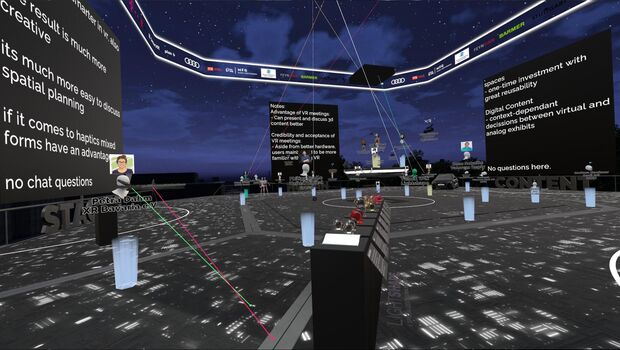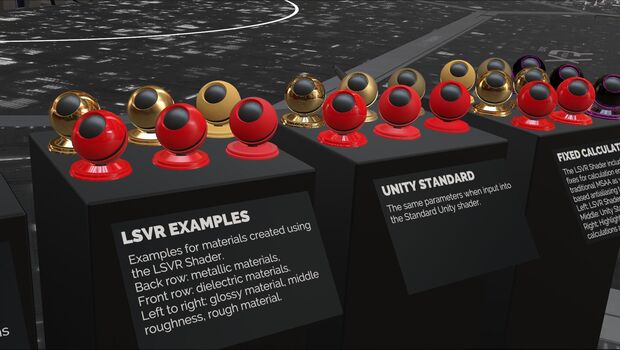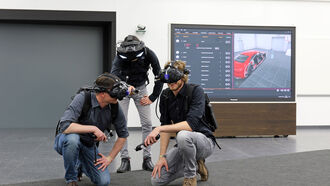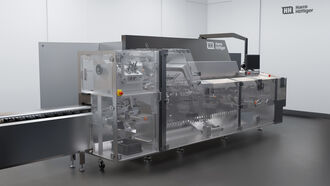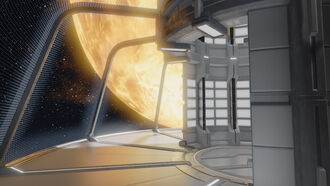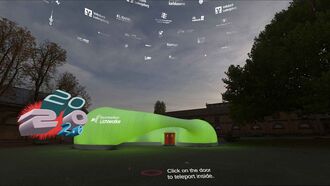Opening of the Sunset Gathering by the organizers on the Overwatch platform in the middle of the scenery.
Virtual Reality Sunset Gathering the VR Event in Stuttgart
In the wake of the pandemic, XR Expo 2020 met the same fate as other events three and a half months before the event. The originally planned event had to be cancelled. The evening event has always been a special highlight in previous events.
There, the community and interested parties could exchange ideas in an informal atmosphere. Since this get-together would otherwise have been cancelled, LIGHTSHAPE developed a virtual reality event with the company's own VR software the HCC (Holodeck Control Center).
Client XR Expo GmbH
Challenge Design, development and execution of a virtual reality evening event after XR Expo 2020.
Highlights 30 users at the same time, 55 users in total, session total duration 4 hours, 100 - 150 viewers on each of the four Youtube channels
Technology HCC Holodeck Control Center by LIGHTSHAPE
Devices HMDs: HTC VIVE, Oculus Quest, Microsoft HMD, mobile or desktop with current browser in the live stream.
Partner Plan B, CDM Tech, SectorVR
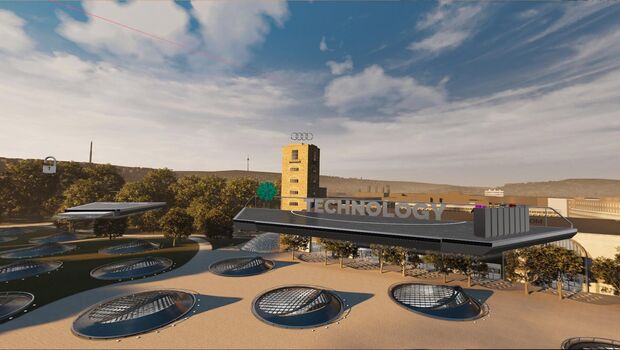
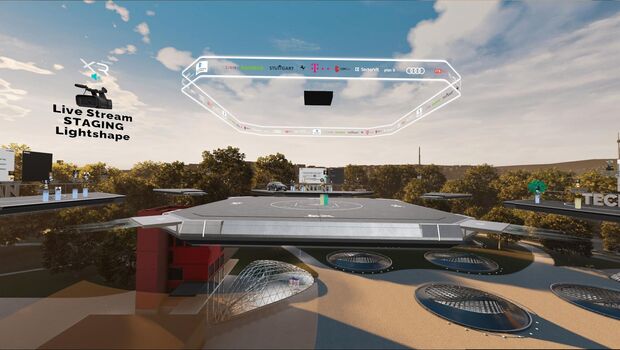
Course of the event
Opening
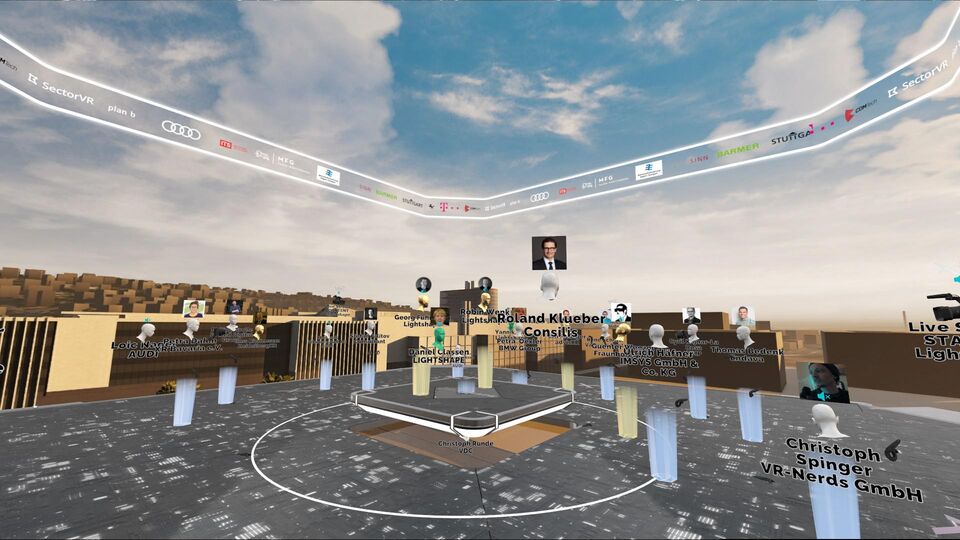
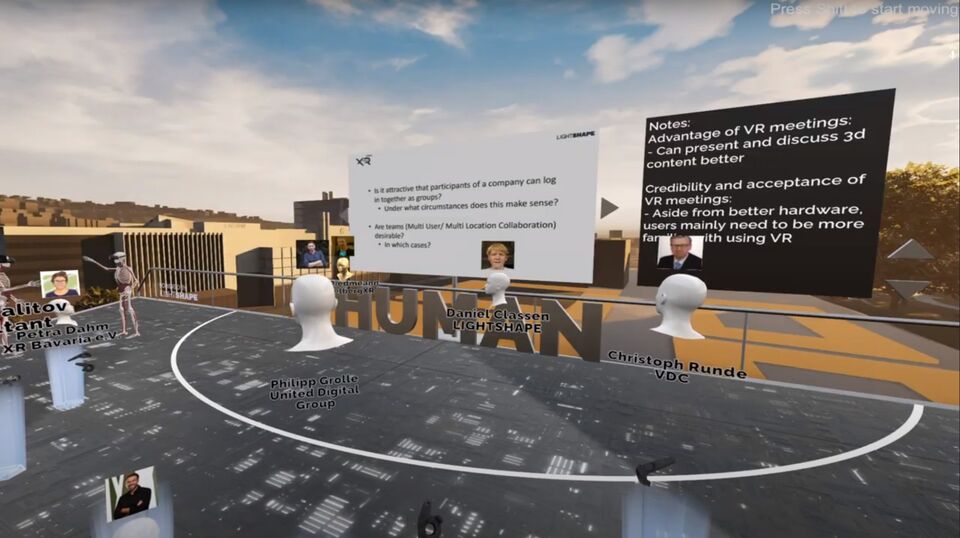
Discussion
Lively discussion on one of the four topic platforms:
- Human: user perceptions and impressions.
- Content: content requirements and opportunities.
- Staging: Importance of staging and environment.
- Technology: usability requirements.
Evening scenery
After the discussions, the outer platforms with the participants were slowly moved to the center while the scenery changed to the evening atmosphere.
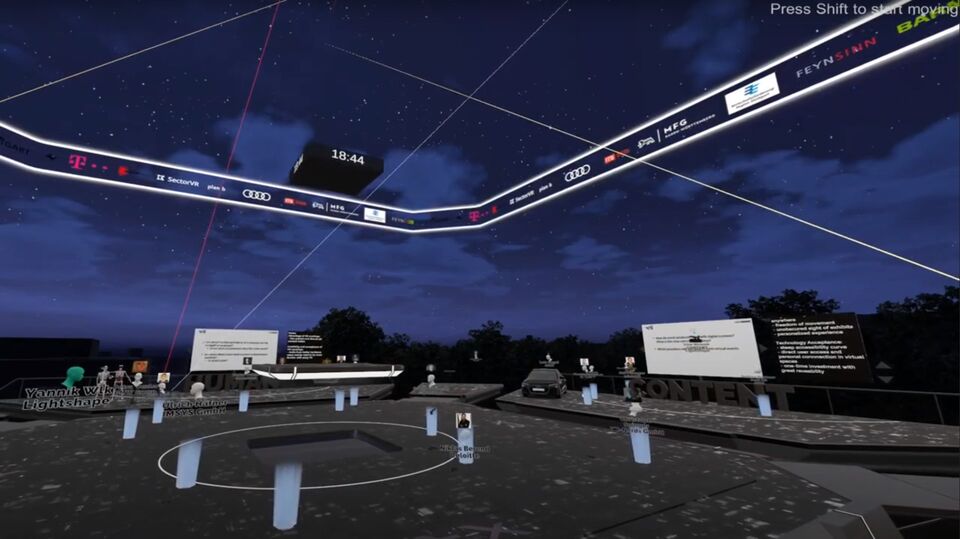
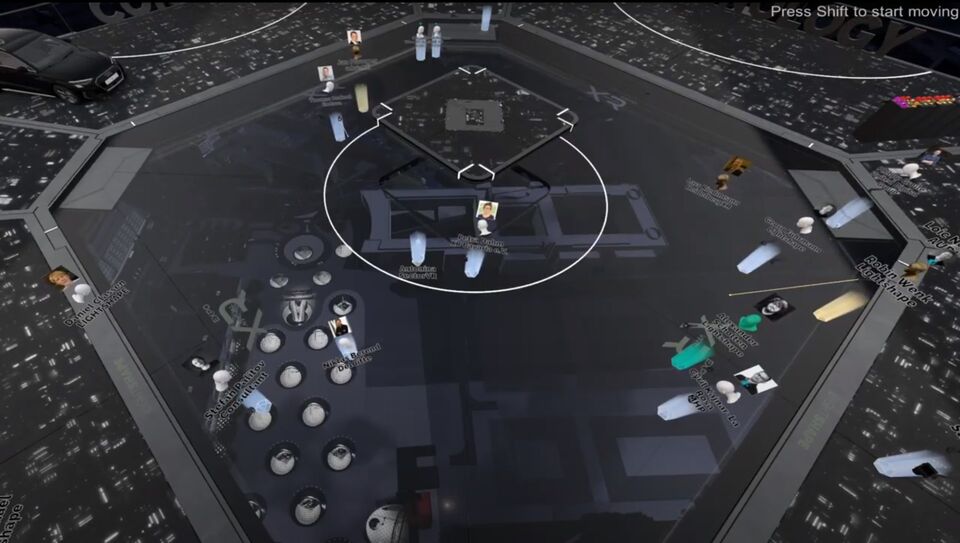
Conclusion
Finally, the main platform was transformed into a glass pane and the floating platforms took up various positions in the surroundings of Stuttgart's future main station.
Our Solution Content conception and technical implementation
The Technology: HCC Control Center
As the organizer of the XR Expo and at the same time developer of our own collaboration platform, the decision to use the Holodeck Control Center - HCC for the evening event was an obvious one. The software architecture of the central control instance, with which one can change the application almost arbitrarily at runtime, and which makes it possible to easily integrate users who are not familiar with the technology, also suited us.
It also came with the option of including different large installations with multiple users and, of course, the ability as developers to freely design the experience to our liking without the limitations of other software platforms.
Although the HCC was mainly used for reviews and training situations, the flexible architecture and the SDK allowed us to quickly develop the missing features for this type of application.
Design of the event
The focus of XR Expo on B2B solutions meant that we wanted to create a reference to a real context in the scene of the virtual event, instead of complete fiction. The aim was also to transfer the spirit of the real get-together into virtual reality. If possible, we didn't want to take any legacy from reality with us and instead focus on the strengths of VR.
A pure meeting in VR didn't seem to be enough for us in terms of content, which is why we were looking for additional added value. The result was the concept of a large discussion round with event character. The overarching discussion topic and currently central problem for us was the question: "What does the future of XR events look like?"
We wanted to approach this question in four discussion rounds from different perspectives with experts from various fields. At the same time, the whole thing was intended to serve as a self-experiment for us.
